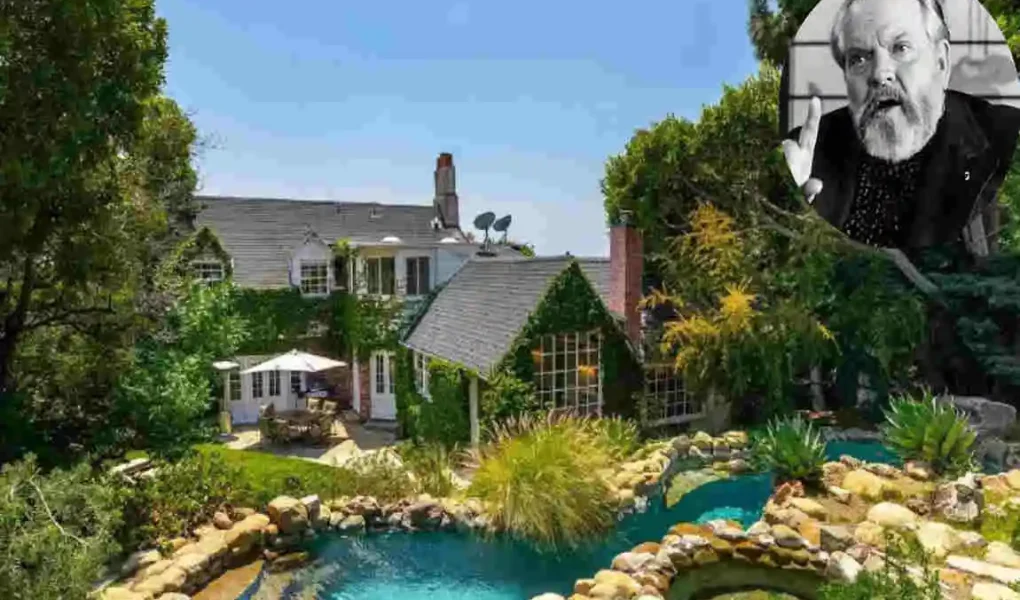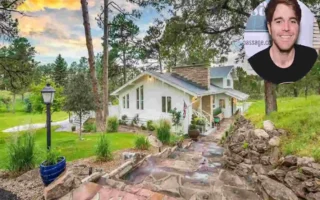Have you ever wondered what it’s like to step inside the world of a true creative genius? Orson Welles, the man behind timeless classics like Citizen Kane, wasn’t just a filmmaker—he was a force of nature. His life overflowed with drama, innovation, and bold storytelling. But to really get to know someone like Welles, you need to peek into their personal spaces. That’s where modern homes come in. They tell stories that biographies often miss.
Why does a house matter so much? Personal spaces like the Orson Welles house offer clues about how artists live and think. Welles poured his soul into his work, and his home became an extension of that. From the rooms where he dreamed up scripts to the spots where he entertained Hollywood stars, every corner whispers secrets about his legacy.
| Category | Details |
|---|---|
| Full Name | George Orson Welles |
| Birth Date | May 6, 1915 |
| Birth Place | Kenosha, Wisconsin, United States |
| Death Date | October 10, 1985 |
| Death Place | Los Angeles, California, United States |
| Parents | Richard Head Welles (inventor), Beatrice Ives Welles (concert pianist) |
| Siblings | Dickie Welles, Richard Ives Welles |
| Spouses | Virginia Nicholson (1934–1940), Rita Hayworth (1943–1947), Paola Mori (1955–1985) |
| Children | Beatrice Welles, Christopher Welles Feder, Michael Lindsay-Hogg, Rebecca Welles |
| Occupation | Actor, director, writer, producer, magician |
| Known For | Film Citizen Kane, radio broadcast The War of the Worlds |
| Height | 6’4″ (193 cm) |
| Net Worth Status | Information on current net worth is not applicable as he passed away in 1985 |
| Current Residence | Not applicable; Orson Welles passed away in 1985 |
Who Was Orson Welles?

Orson Welles burst onto the scene like a comet, leaving a trail of innovation wherever he went. Born on 6 May 1915 in Kenosha, Wisconsin, he grew up in a world of art and tragedy. His mother, a pianist, and his father, an inventor, sparked his early love for creativity. But life hit hard—both parents died young, shaping Welles into the resilient storyteller we know today.
As a kid, Welles dove into theater. He performed Shakespeare at just 15 and even traveled to Ireland to act professionally. Back in the U.S., he founded the Mercury Theatre in New York. This group became his playground for bold experiments. Reader, picture a young Welles directing plays that mixed modern twists with classic tales. It was here that his genius began to shine.
Welles’s big break came in 1938 with the War of the Worlds radio broadcast. He adapted H.G. Wells’s novel into a fake news bulletin about an alien invasion. Panic ensued—people thought it was real! This stunt made him a household name overnight. It showed his knack for blending reality and fiction, a theme that echoed through his career.
Then came Hollywood. At 25, Welles signed with RKO Pictures and created Citizen Kane in 1941. Critics hail it as one of the greatest films ever. He directed, produced, wrote, and starred in it, proving he was a multi-talented force. The movie explored power, loss, and memory through the life of a media mogul. Sound familiar? Many say it’s loosely based on real tycoons like William Randolph Hearst.
But Welles didn’t stop there. He tackled films like The Magnificent Ambersons and Touch of Evil, always pushing boundaries. He acted in theater, radio, and even magic shows. His voice boomed in narrations, and his presence filled every room. Yet, success brought battles—studio fights, funding woes, and personal demons. Welles married three times, including to Rita Hayworth, and fathered children while juggling a nomadic life.
Why does all this matter for our tour? Exploring the Orson Welles house gives us a window into this whirlwind existence. It’s not just a building; it’s a piece of Orson Welles’ biography. Living there during key years, Welles used it as a creative hub. Think about it: the same walls that heard his booming laugh also witnessed script revisions and late-night brainstorming.
Reader, have you ever wondered how a stunning home shapes an artist’s work? In Welles’s case, his Orson Welles home became a sanctuary amid Hollywood chaos. It reflected his love for drama—grand rooms filled with artifacts from his travels. As we move through this article, you’ll see how this space ties into his milestones.
Welles’s legacy endures. He influenced directors like Martin Scorsese and Steven Spielberg. Even today, his innovative techniques in editing and storytelling inspire filmmakers. But to truly grasp his spirit, we need to step inside his world. That’s where the Orson Welles house comes alive, offering unique insights into the innovator behind the camera.
The History Behind the Orson Welles House
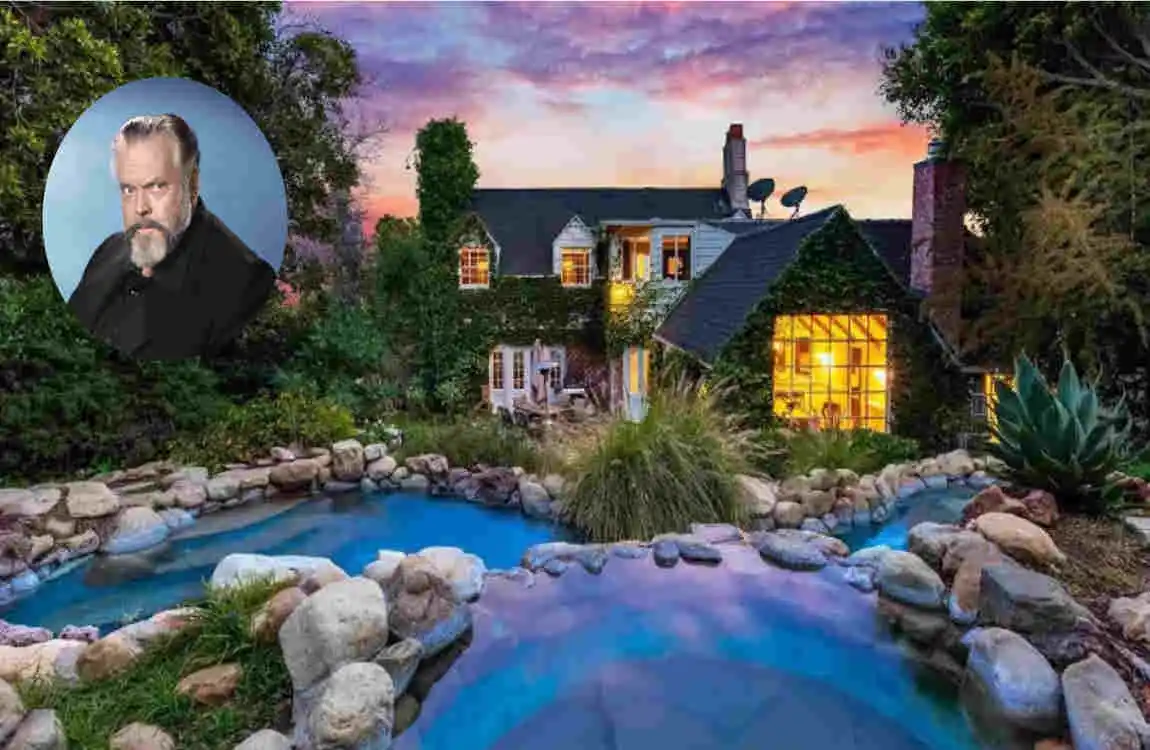
Let’s travel back in time to uncover the story of the Orson Welles house. Nestled in the heart of Beverly Hills, California, this property sits in a neighborhood known for its star-studded glamour. Think palm-lined streets and homes that whisper Hollywood secrets. Welles acquired it in the 1940s, right after Citizen Kane catapulted him to fame. He bought it as a retreat from the studio pressures, paying what was then a hefty sum for the sprawling estate.
| Attribute | Details |
|---|---|
| Address | 1717 North Stanley Avenue, Hollywood Hills, Los Angeles |
| Architecture Style | 1920s Neoclassical Revival |
| Size | Approximately 5,582 square feet |
| Rooms | 4 bedrooms |
| Notable Features | – Restored foyer and front porch |
| – Refurbished fireplaces and chimneys | |
| – Black-and-white tiled master bath inspired by 1920s-30s style | |
| – New attic staircase, wraparound covered porches on 1st and 2nd floors | |
| – Kidney-shaped outdoor lagoon-style pool with new coping | |
| – Renovated basement, guest suite, rec room, gym, and reconceived guesthouse | |
| Renovation | Major $1.7 million renovation in 2019 by architecture firm Tim Barber, Ltd to restore original integrity with modern updates |
| Design Philosophy | Respectful restoration aiming to preserve original charm with subtle modern distinctions |
| History | Home of Orson Welles during his later years; had deteriorated and suffered insensitive renovations before restoration |
| Current Use | Family home with frequent gatherings and dinners |
| Estimated Worth | Approximately $3.2 million (market price reported around renovation period) |
The house itself boasts a Spanish Revival architectural Style, popular in California’s golden age. Picture terracotta roofs, arched doorways, and stucco walls that evoke old-world charm. Built in the 1920s, it spans over 3,000 square feet with lush gardens and a pool. What makes it historically significant? It wasn’t just any home; it stood as a symbol of Welles’s ascent in Tinseltown. Architects drew inspiration from Mediterranean villas, blending elegance with functionality—perfect for a man who loved dramatic flair.
Welles lived there intermittently from 1943 to 1947, a pivotal period in his life. This was when he married Rita Hayworth and worked on films like The Lady from Shanghai. Key events unfolded within these walls: heated script meetings, star-studded parties, and even family moments with his daughter Rebecca. Imagine Welles pacing the halls, cigarette in hand, plotting his next masterpiece.
Notable visitors added to the modern house’s allure. Legends like Charlie Chaplin and Joseph Cotten dropped by for lively discussions. One famous gathering reportedly inspired scenes in Welles’s later works. The Orson Welles estate even hosted informal rehearsals for his theater projects, turning it into a creative hotspot.
But life wasn’t all glamour. Financial strains forced Welles to sell the property in the late 1940s as he sought new opportunities in Europe. Still, this Orson Welles home fits neatly into his timeline— a chapter of triumph mixed with turmoil. It represents his Hollywood peak before exile.
Reader, doesn’t that make you curious? Homes like this aren’t just structures; they’re time capsules. As we explore further, you’ll see how the Orson Welles house captures the essence of his era. If you’ve ever toured famous directors’ homes, you know the thrill of connecting dots from history to personal life.
Interior Design & Artistic Elements of the Orson Welles House
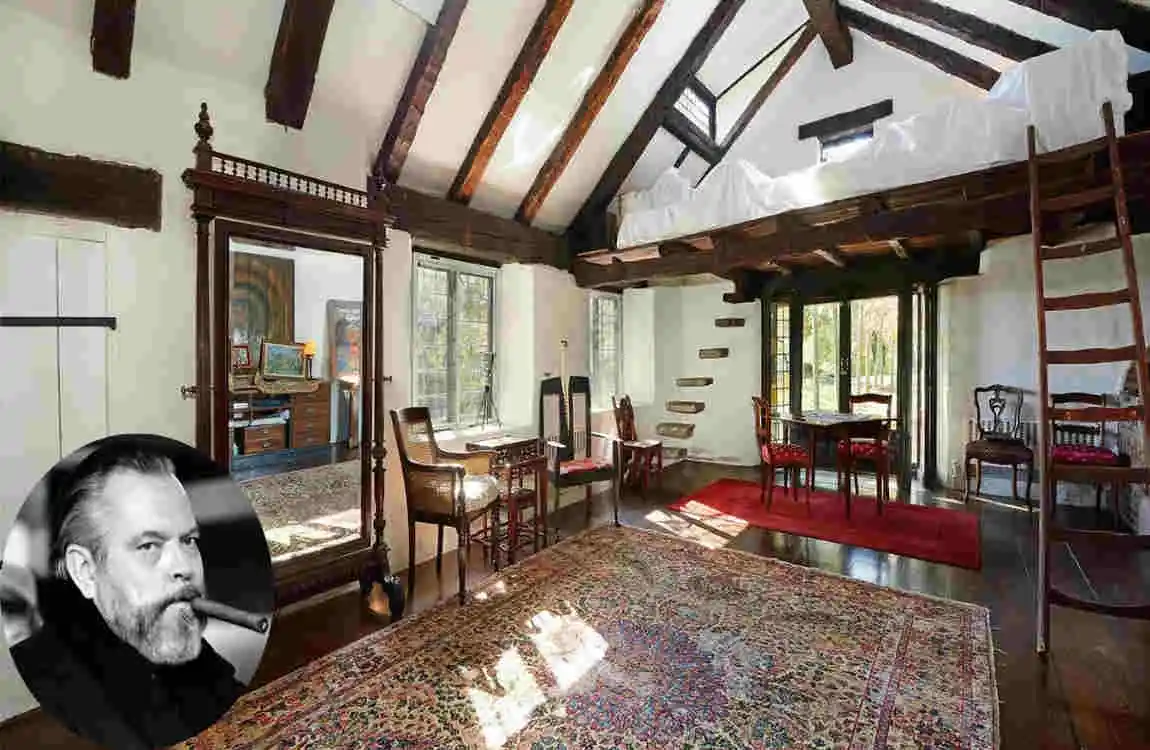
Now, let’s step inside the Orson Welles house for a room-by-room tour. I’ll guide you through each space, highlighting how the design echoes Welles’s bold personality. Remember, this isn’t a sterile museum—it’s a lived-in haven where creativity flowed freely. Ready? Let’s start with the living room.
The Living Room: A Stage for Drama
The living room greets you like a grand theater set. High ceilings and wide windows flood the space with natural light, creating a dramatic atmosphere. Welles furnished it with oversized leather sofas and antique rugs from his travels. Personal artifacts abound: a signed poster from Citizen Kane hangs on one wall, while shelves hold magic tricks from his early days as a performer.
What stands out? The massive stone fireplace is often the centerpiece for gatherings. Welles loved telling stories here, his voice booming like in his radio broadcasts. The home decor mixes eclectic styles—Victorian lamps alongside modern art—mirroring his innovative filmmaking. Reader, imagine curling up here; you’d feel his energy lingering.
The Study: Where Ideas Came to Life
Moving to the study, this room served as Welles’s creative engine. Dark wood paneling and a large oak desk dominate, cluttered with script drafts and notebooks. He wrote parts of The Lady from Shanghai right here, surrounded by books on Shakespeare and cinema history.
Artistic elements shine through in the lighting: soft, adjustable lamps that mimic film sets. Welles collected oddities like a globe from his world travels and framed photos of theater productions. This space reflects his work ethic—intense, focused, and a bit chaotic. It’s easy to picture him pacing, dictating ideas late into the night.
Film and Art Collections: A Personal Gallery
Throughout the Orson Welles house, his collections tell a deeper story. In hallways and bedrooms, you’ll find film reels, rare posters, and sculptures. One bedroom doubles as a mini-gallery with paintings inspired by his movies. These items showcase his passions: storytelling, illusion, and beauty.
To break it down, here’s a quick list of standout features that reflect his artistic vision:
- Bold color schemes: Deep reds and golds, evoking the drama of his films.
- Memorabilia walls: Photos with stars like Hayworth, blending personal and professional life.
- Custom built-ins: Shelves for scripts, designed for easy access during creative bursts.
- Garden views: Large windows framing the outdoors, inspiring his love for natural settings in movies.
Every piece in the Orson Welles home screams personality. The furnishings—mismatched yet harmonious—show his rejection of convention, much like his editing in Citizen Kane. Photographs of the era capture details like ornate chandeliers and velvet curtains, adding to the allure.
Reader, what would you add to your own space if you were Welles? This tour reminds us how homes can fuel creativity. As we continue, these elements tie into the stories that unfolded here.
Behind the Scenes: Stories & Anecdotes from the Orson Welles House

Homes hold memories, and the Orson Welles house overflows with them. Let’s dive into the tales shared by friends, family, and biographers. These anecdotes paint Welles as more than a director—he was a lively host and relentless creator.
One story comes from his daughter, who recalls childhood games in the garden. Welles would stage impromptu plays, turning the yard into a theater. Biographers like Simon Callow note how he used the living room for voice rehearsals, his baritone filling the air. It’s touching to think of these private moments amid his public fame.
Friends like Peter Bogdanovich shared fun bits: Welles once hosted a magic show in the study, fooling guests with illusions. This playful side contrasted with his intense work habits. He often stayed up all night revising scripts, coffee in hand, ignoring the clock.
Did the house inspire his work? Absolutely. Parts of Touch of Evil drew from late-night ideas born here. One anecdote claims a stormy evening in the Orson Welles estate sparked a scene’s tension. Family members say he paced the halls, muttering lines, blending home life with Hollywood.
For a deeper look, here’s a numbered list of key anecdotes that reveal his daily routine:
- Morning rituals: Welles started days with strong coffee in the kitchen, reading newspapers for inspiration— a habit that fueled his satirical edge.
- Evening gatherings: He invited actors for wine-fueled debates, often leading to collaborative ideas for films.
- Creative slumps: During tough times, he’d retreat to the bedroom, emerging with breakthroughs, like plot twists for unfinished projects.
- Family dynamics: With Rita Hayworth, the luxury house saw romantic dinners, but also arguments that echoed his on-screen dramas.
These stories humanize Welles. Reader, can you relate to using your home as a creative escape? They show how the Orson Welles home wasn’t just a residence—it was a backdrop for life’s highs and lows. Exploring celebrity house tours like this reminds us that icons had everyday joys and struggles, too.
Preservation and Current Status of the Orson Welles House
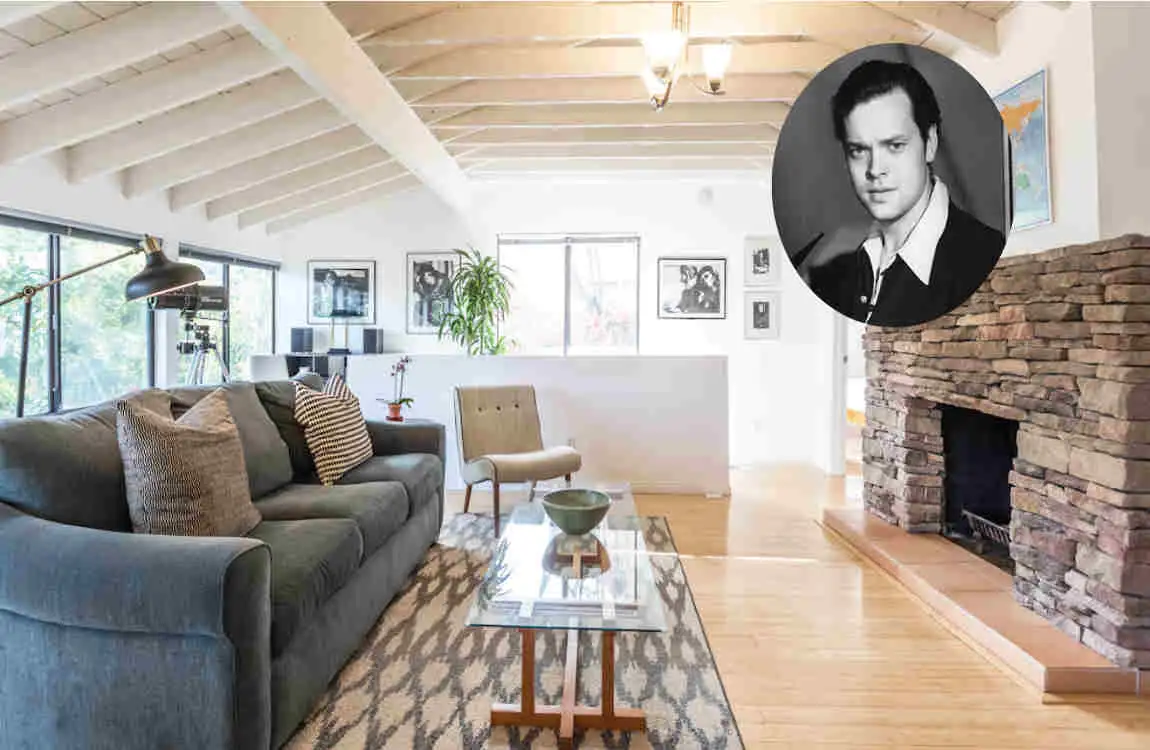
After Welles died in 1985, the Orson Welles house entered a new chapter. He sold it decades earlier, and it passed through private owners. Today, it remains a private residence in Beverly Hills, not open for public tours. However, its historical value hasn’t faded.
Preservation efforts kicked in during the 2000s when film historians lobbied for landmark status. The city recognized it as a cultural site, protecting its architecture from major changes. Restoration work focused on maintaining original features like the terracotta roof and stone fireplace. Fans and experts appreciate these steps, ensuring the house’s legacy endures.
How do people interact with it now? Virtual tours and documentaries offer glimpses, while historians host online discussions. If you’re lucky, private events allow access, but it’s rare. The Orson Welles estate draws interest from film buffs worldwide, much like other famous directors’ homes.
To summarize key facts, here’s a table on its status:
Aspect Details
Current Use : Private residence; not a museum
Preservation Efforts Landmark designation in 2005; restorations to the original Spanish Revival Style
Access for Fans Limited—virtual tours via apps or historian-led online sessions
Cultural Interest Site for film history talks; occasional media features
Notable Changes : Minor updates for modern living, but core features preserved
Reader, if preservation matters to you, consider supporting film heritage groups. The Orson Welles house stands as a testament to his impact, inviting us to reflect on how we honor creative spaces.
What We Can Learn About Orson Welles Through His Home
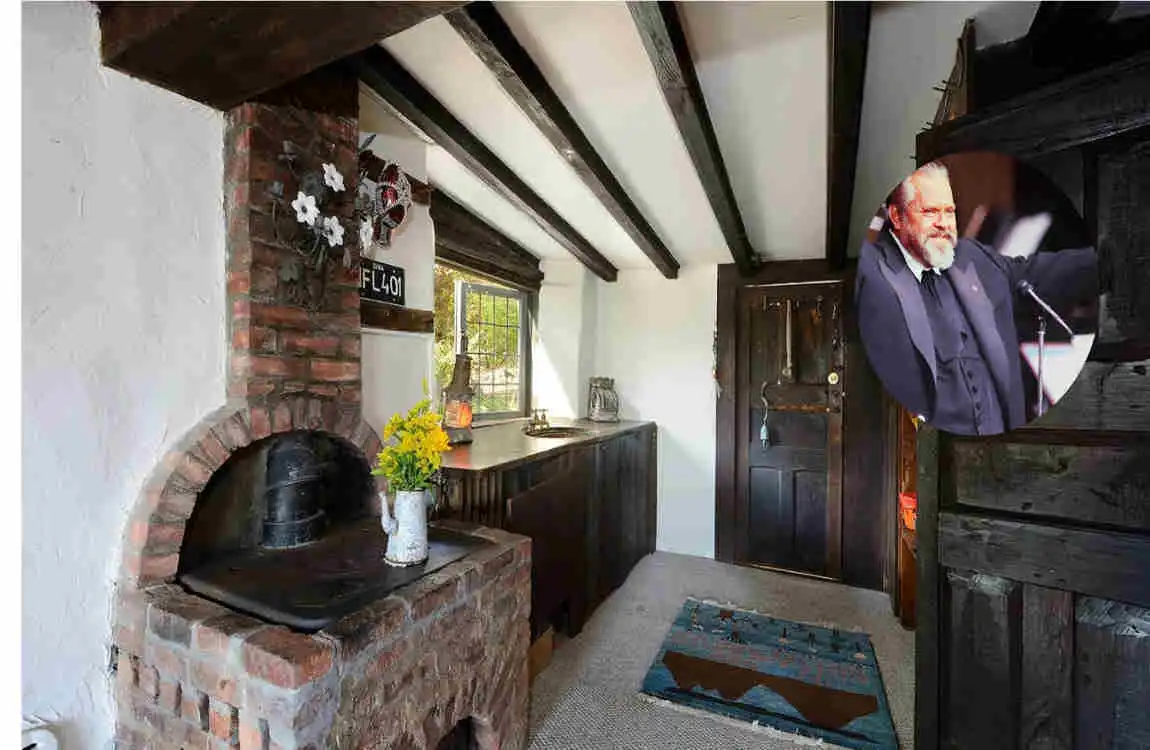
Stepping back, the Orson Welles house teaches us plenty about the man. His personality shines through in every detail—from the dramatic living room to the cluttered study. It reveals a bold innovator who blended chaos with genius.
Key insights? Welles valued comfort amid creativity. The home’s decor shows his rejection of norms, much like his films. We see his work ethic in the spaces designed for late-night brainstorming, highlighting discipline behind the flair.
Symbolically, the house narrates his life: peaks of fame in Hollywood, hints of isolation in private rooms. It reminds us that artists thrive in environments that nurture ideas. Reader, what does your home say about you? Exploring this Orson Welles home encourages us to view living spaces as extensions of our stories.
Emotionally, it evokes admiration. Visiting or learning about it connects us to Welles’s legacy, inspiring our own creativity.
Orson Welles House FAQ
Where is Orson Welles’ House Located?
Orson Welles’ most famous residence was located in Woodland Hills, Los Angeles, California. This house, known as the “Welles House,” was where he lived during the height of his career in the 1940s and 1950s.
What Style is Orson Welles’ House?
The Orson Welles house in Woodland Hills is a classic example of Spanish Colonial Revival architecture. This style, popular in California during the early 20th century, features elements like stucco exteriors, red tile roofs, and arched doorways and windows.
How Big is Orson Welles’ House?
The Orson Welles house in Woodland Hills spans approximately 3,000 square feet. This size was substantial for the time and provided ample space for Welles, his family, and his creative pursuits.
Does Orson Welles’ House Have Any Unique Features?
Absolutely! Here are some standout features of Orson Welles’ home:
- Screening Room: As a filmmaker, Welles had a dedicated screening room where he could watch and edit his films.
- Recording Studio: The house featured a recording studio where Welles could work on his radio shows and voiceover projects.
- Library: Welles was an avid reader and collector of books, so his home included a large library filled with his literary treasures.
- Outdoor Courtyard: The Spanish Colonial style of the house included a charming outdoor courtyard, perfect for entertaining and relaxation.
Is Orson Welles’ House Open to the Public?
No, Orson Welles’ house is a private residence and not open to the public. After Welles sold the property in the 1970s, it has remained in private hands and is not accessible for tours.
Has Orson Welles’ House Been Featured in Any Media?
While Orson Welles’ house hasn’t been extensively featured in media, it has been mentioned in various biographies and documentaries about his life and career. However, detailed tours or features of the house are rare, as it’s a private residence.
Does Orson Welles Own Other Properties?
Yes, Orson Welles owned multiple properties throughout his life. In addition to his Woodland Hills home, he lived in various locations, including:
- New York City: Welles spent time in NYC during his early career in theater and radio.
- Las Vegas: In his later years, Welles owned a home in Las Vegas, where he worked on various projects.
- Europe: Welles lived in several European countries, including Spain and Italy, at different points in his life.
Where Does Orson Welles Currently Live?
Orson Welles is deceased; he passed away on October 10, 1985, in Los Angeles, California. Therefore, he does not currently live anywhere. His last home was located at 1717 N Stanley Ave, Los Angeles, CA 90046. Welles was born in Kenosha, Wisconsin, and lived in several places during his lifetime, including Illinois and California, but he died in Los Angeles.
Orson Welles House Photos



